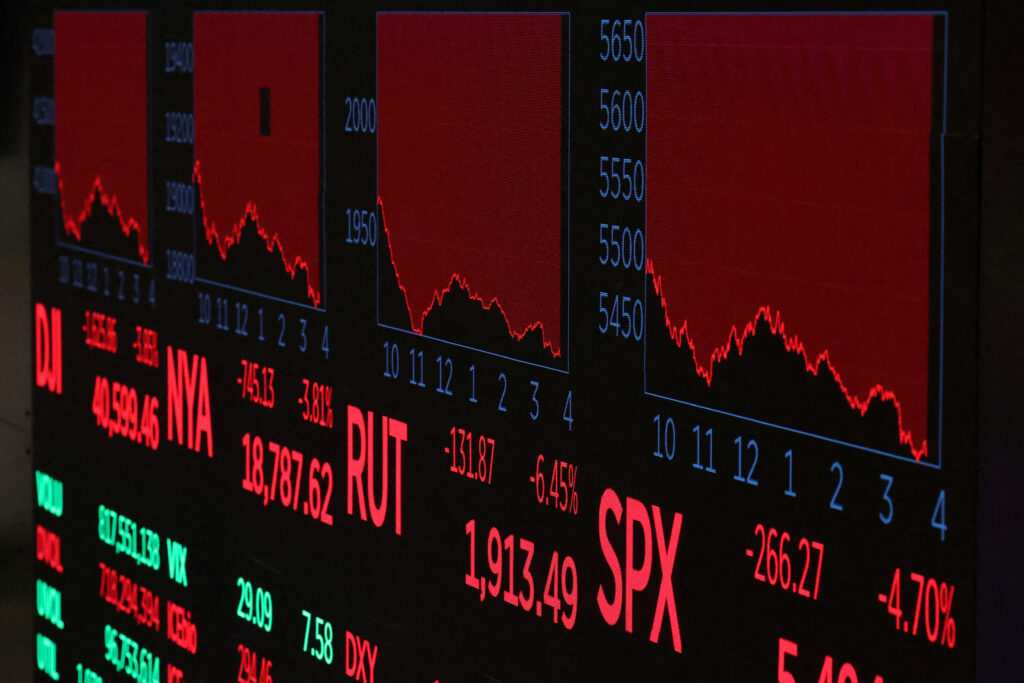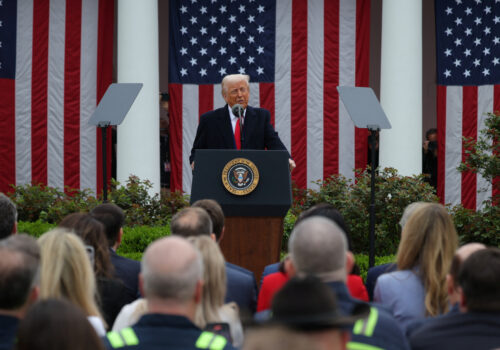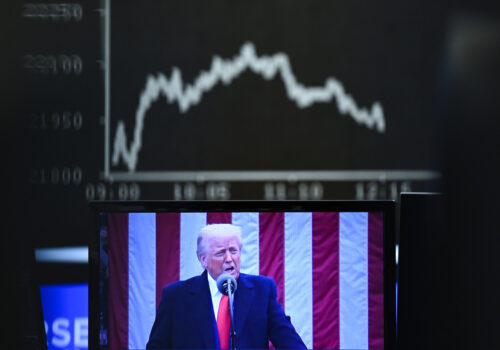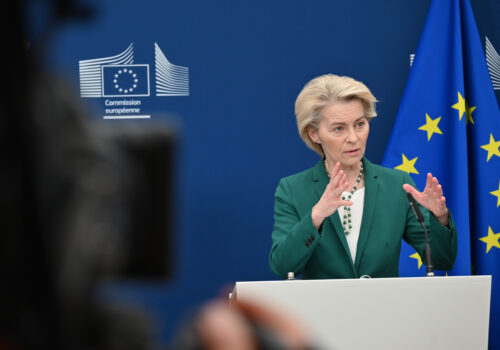Depending on which half of the Financial Times’ opinion page you read today, US President Donald Trump is either an American savior or a global godfather shaking down allies.
Call it piquant editorial juxtaposition.
The Financial Times places an op-ed by Peter Navarro, Trump’s tariff czar, on how his boss’s tariffs “will fix a broken system” directly above columnist Gideon Rachman’s noticing of “a distinct whiff of Don Corleone” in the Oval Office’s approach to trade.
Writes Navarro: “The international trade system is broken—and Donald Trump’s reciprocal tariff doctrine will fix it. This long-overdue restructuring will make both the US and global economies more resilient and prosperous by restoring fairness and balance to a system rigged against America.”
By contrast, Rachman paints Trump as the godfather-in-chief. “Like a movie mob boss,” he writes, “Trump knows how to switch between menace and magnanimity. Treat him with respect and he might invite you to his house, where you can mingle with his family. But the menace never disappears.”
Nothing could better illustrate the escalating dispute between Trump and much of the rest of the world on tariffs than this Navarro-Rachman divide.
Navarro senses a unique and historic opportunity to right a wrong, a cumulative US trade deficit since 1976 that has “transferred over $20tn of American wealth into foreign hands. . . . Foreign interests have taken over vast swaths of US farmland, housing, tech companies, and even parts of our food supply.”
Rachman’s response is that Trump won’t prevail in a war where he lacks allies.
“There are simply too many actors involved for Trump’s mob boss tactics to work,” he writes. “There are all the investors who have rushed to sell their shares, causing stock markets to tank. There are the manufacturers who simply cannot do business under the conditions created by Trump—and who are shutting down production lines. And, as for Chinese President Xi Jinping’s mob, they have decided to fire back rather than buckle. This is getting extremely messy.”
The Atlantic Council’s Josh Lipsky puts it this way today: “US President Donald Trump has launched a global economic war without any allies. That’s why—unlike previous economic crises in this century—there is no one coming to save the global economy if the situation starts to unravel.”
Global markets still hope this is all part of Trump’s “art of the deal,” a strategy that isn’t really about breaking the system, but is instead about getting better trade conditions through negotiations.
When an unverified post on the social media platform X falsely claimed yesterday morning that Kevin Hassett, director of the White House National Economic Council, had said Trump was considering a ninety-day pause on tariffs, major indexes soared, delivering a two-trillion-dollar gain in value. Markets gave up those gains when the White House refuted the post as “fake news.”
“This is not a negotiation,” Navarro writes. “For the US, it is a national emergency triggered by trade deficits caused by a rigged system. President Trump is always willing to listen. But to those world leaders who, after decades of cheating, are suddenly offering to lower tariffs—know this: that’s just the beginning.”
In her own column this past Friday, a touching salute to US relations with Canada, the Wall Street Journal’s Peggy Noonan also draws upon the film The Godfather to describe where the United States and the world now stand.
During the peace summit Don Corleone hosts with heads of the five mafia families after the outbreak of a mob war and a string of retaliatory killings, he asks, “How did things ever get so far? . . . It was so unfortunate, so unnecessary.”
Frederick Kempe is president and chief executive officer of the Atlantic Council. You can follow him on X: @FredKempe.
This edition is part of Frederick Kempe’s Inflection Points newsletter, a column of dispatches from a world in transition. To receive this newsletter throughout the week, sign up here.
Further reading
Fri, Apr 4, 2025
Experts react: How the world is responding to Trump’s ‘liberation day’ tariffs
New Atlanticist By
Atlantic Council experts tour the world to take stock of how US trading partners are responding to US President Donald Trump’s new reciprocal tariffs.
Thu, Apr 3, 2025
Why the markets keep getting Trump wrong
Inflection Points By Frederick Kempe
Investors repeatedly miscalculated US President Donald Trump’s far-reaching intentions regarding tariffs ahead of his announcements on April 2. Is this time different?
Tue, Apr 8, 2025
The EU could respond to Trump’s tariffs with a new ‘anti-coercion instrument.’ Here’s what to know.
New Atlanticist By
Confronted with the latest round of US tariffs, the European Union is considering a new but untested tool in its economic-security toolbox.
Image: A screen shows trading indexes at the New York Stock Exchange (NYSE) in New York City, U.S., April 3, 2025. REUTERS/Brendan McDermid/File Photo




